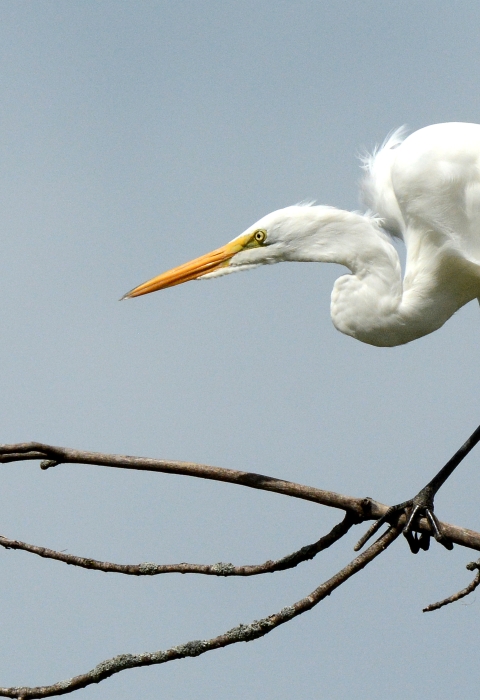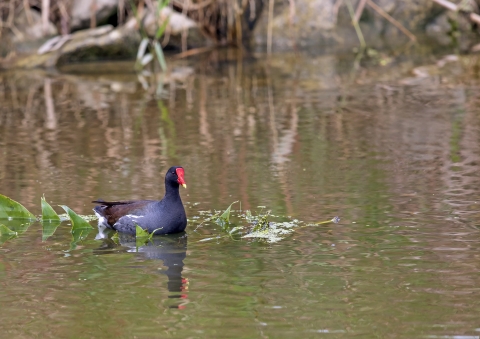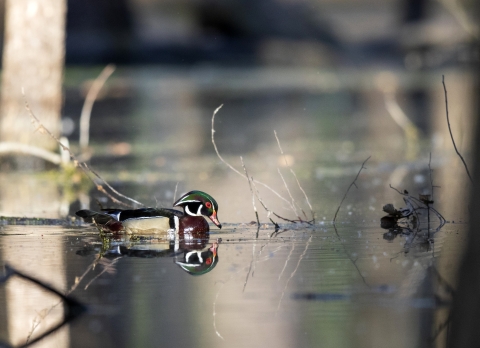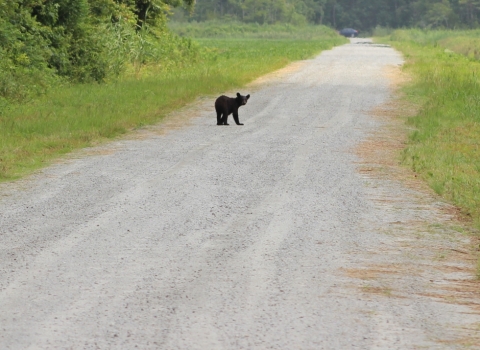We at the U.S. Fish and Wildlife Service have seen a dramatic transformation over the past decade at Shiawassee National Wildlife Refuge, thanks to funding from the Great Lakes Restoration Initiative. Habitat restorations have reconnected rivers that were cut off from diked floodplains for more than 100 years.
Eric Dunton, a refuge biologist for the past 13 years, has been an integral part of that transformation and works with partners to restore the marsh and floodplain areas. The refuge is the site of a 1,000-acre wetland restoration project, which aims to provide high-quality habitat for wildlife and cleaner water.
“We have worked hard to prove this is a coastal system,” said Dunton. “Despite being 20 miles in-land, the Shiawassee Flats are directly connected to Saginaw Bay and the southern end of Lake Huron.”
A freshwater coastal system
Michigan’s lower peninsula is famously mitten-shaped, thanks to Saginaw Bay. Twenty miles south of the bay lies the refuge’s impressive 10,000-acre grassland and wetland complex. That complex is part of a larger area called the Shiawassee Flats, which act like a giant funnel where the Cass, Tittabawassee, Shiawassee and Flint rivers all converge in this low-lying area.
The flats include the national wildlife refuge national wildlife refuge
A national wildlife refuge is typically a contiguous area of land and water managed by the U.S. Fish and Wildlife Service for the conservation and, where appropriate, restoration of fish, wildlife and plant resources and their habitats for the benefit of present and future generations of Americans.
Learn more about national wildlife refuge , the state game refuge and surrounding wetland complexes. They serve as an important migratory stopover for tens of thousands of waterbirds. Fish, amphibians and other wildlife also rely on the habitat for breeding grounds, and the area is well known as a recreational paradise for bird watchers, anglers and hunters.
During normal years, an impressive 15% of the inland freshwater in the Lower Peninsula flows through the refuge. The flats act as a filter for the water, gleaning out excess nutrients and pollutants before the water flows into the Saginaw River and out to the Saginaw Bay.
“During certain times of the year,” said Dunton, “the wind pushes water inland towards the refuge instead of the more typical outflow to the bay. Because the bay and the flats share so much water, there’s no doubt they share fish populations. The question is to what degree they share fish resources.”
Dunton has been working with partners to assist in surveys to better understand the fisheries population of the Saginaw River.
Our agency, the U.S. Geological Survey and the University of Michigan School of Natural Resources and Environment have partnered to determine how many fish are in the river and are moving into the refuge. Using sonar detection, the partners have been able to see how many fish are passing through the system. This allows scientists to better understand how aquatic species use the coastal marsh, which is critical to understanding the next steps in the refuge restoration.
A wise investment
Dunton is continuing to work with partners to restore the marsh and floodplain areas within the refuge. Ducks Unlimited received $1.5 million for the first Great Lakes Restoration Initiative project on Maankiki Marsh, which broke ground in 2016. That first project began at Shiawassee National Wildlife Refuge and since then, more than $3.8 billion in Great Lakes Restoration Initiative projects have been awarded throughout the Great Lakes region.
Over the last eight years, partners collaborating to restore Shiawassee Flats have seen habitat improvement for water quality benefits and birds, fish and other wildlife. Although Saginaw Bay has seen some algal blooms in recent years, natural resources managers know the restoration is working.
“The blooms would be much worse and more frequent without the refuge’s filtration,” said Dunton. He cited research data from University of Michigan graduate students Aubrey Kowalski and James Stack which showed that water had fewer nutrients after flowing through the refuge.
Dunton said there is plenty of work to continue and the magnitude of this effort takes continued dedication, patience and constant reassessment. On-the-ground conservation is often time-intensive, expensive and requires extensive collaboration between local communities, state and federal agencies, private landowners and other partners.
Despite the heavy lift, the impact of these projects is an invaluable investment that ensures benefits, even those far beyond the original intentions.
In the case of the refuge, reviving the wetlands helped avoid catastrophic damage in 2020 when a dam on the Tittabawassee River failed, giving way to flood waters that rushed towards Saginaw Bay. The refuge was under almost 10 feet of water during the unexpected flood. However, refuge managers and local officials were able to avoid the displacement of thousands of residents in low-lying areas of Bay City, thanks to the flood protection provided by the wetlands.






